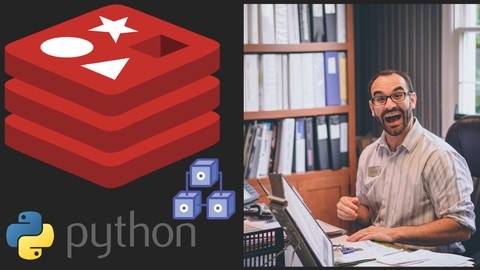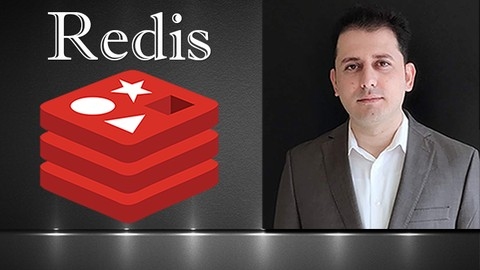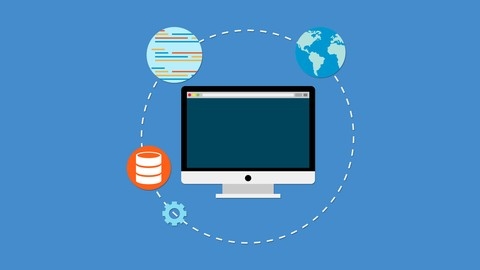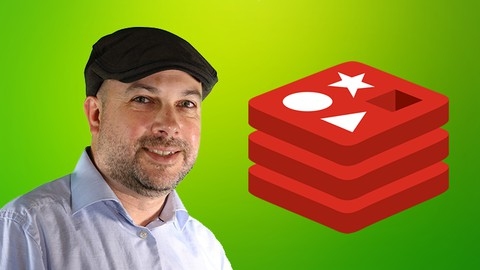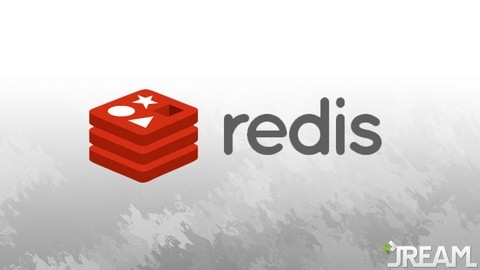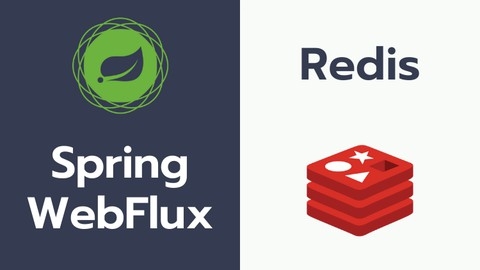Redis is an open-source, in-memory data store that’s become a go-to tool for developers building high-performance, scalable applications.
It’s incredibly fast, supports multiple data structures, and can be used for a wide range of tasks, including caching, session management, real-time data processing, and more.
Learning Redis can unlock powerful capabilities for your projects, allowing you to build faster, more efficient, and more responsive applications.
Finding a good Redis course on Udemy can be a real challenge, though.
With so many options available, it can be hard to know which one is right for you.
You’re looking for a course that’s comprehensive, engaging, and taught by experienced instructors who can guide you through the complexities of Redis.
You want a course that goes beyond theory, providing practical experience and hands-on projects to solidify your understanding.
For the best Redis course overall on Udemy, we recommend Redis: The Complete Developer’s Guide.
This course provides a comprehensive introduction to Redis, covering everything from basic commands to advanced concepts like clustering, scripting, and modules.
It features detailed explanations, code examples, and hands-on projects that will help you master this powerful technology.
While Redis: The Complete Developer’s Guide is our top pick, we’ve compiled a comprehensive list of other great Redis courses on Udemy.
Keep reading to explore our recommendations for different learning styles and goals, from beginner-friendly introductions to advanced courses focused on specific use cases and integrations.
Redis: The Complete Developer’s Guide
You’ll start by learning the fundamentals of Redis, including its key-value data model, basic commands for storing and retrieving data, and how to set up Redis locally on your machine.
From there, the course dives into more advanced topics like hash data structures, which allow you to store objects in Redis.
You’ll learn how to implement features like user authentication, caching, and data serialization/deserialization using Redis.
The course also covers powerful data structures like sets and sorted sets, which enable you to store and query unique values, perform set operations, and rank items based on scores.
As you progress, you’ll build an e-commerce application using Redis, implementing features like product listings, user sessions, like systems, and bidding.
This hands-on project will teach you how to model data in Redis, use pipelining for efficient data access, and handle concurrency issues with transactions and locks.
The course also explores Redis modules like RediSearch, which provides full-text search capabilities, and Redis Streams for inter-service communication.
You’ll learn how to create indexes, execute complex queries, and build consumer groups for reliable message processing.
Throughout the course, you’ll gain experience with Redis client libraries, scripting with Lua, and performance optimization techniques.
The instructor provides detailed explanations, code examples, and exercises to reinforce your understanding of each concept.
Redis Beginners to Advance With Free Lab
You’ll start by learning about Redis’ features, use cases, and the companies that leverage it.
The course then dives into Redis’ data types, allowing you to read and write data efficiently.
You’ll gain hands-on experience through a free lab environment, where you’ll learn to install Redis on Linux and Windows.
The course covers performance benchmarking and mass data insertion techniques to optimize Redis’ performance.
Persistence is a crucial aspect, and you’ll learn about RDB and AOF backups, enabling you to backup and restore your Redis data.
The course also teaches you how to connect to Redis using Python, a popular programming language.
For production environments, you’ll learn about Redis replication using a master-slave configuration.
The course covers high availability scenarios and setting up a three-server Redis cluster with Sentinel for failover.
Redis clustering is another key topic, where you’ll learn about its pros and cons and set up a Redis cluster hands-on.
Finally, the course includes coupons for the instructor’s other trending courses, providing additional learning opportunities.
Learn Redis And Use Jedis With Spring Data Redis
You’ll start by learning what Redis is, its common use cases, and how it differs from traditional SQL databases.
The installation process is covered for Windows, Mac, and Unix systems, along with options for using free cloud-hosted Redis and GUI clients.
This ensures you have a solid setup to follow along with the hands-on examples.
A significant portion focuses on Redis data types like Strings, Lists, Sets, Ordered Sets, and Hashes.
You’ll learn their respective commands for operations like setting, getting, querying, expiring keys, and more.
This practical knowledge is essential for working with Redis effectively.
The course dives into advanced Redis topics like data persistence (RDB, AOF, hybrid approach), backup/restore processes, high availability setups with Sentinel and Cluster configurations, transactions, pub/sub messaging, and authentication mechanisms.
These are crucial for production-ready Redis deployments.
Jedis, a popular Java client for Redis, is covered in-depth, including connection pooling and integration with Spring Data Redis.
You’ll build a Spring Boot project and learn to create Redis templates, configure serializers, and develop backend APIs for various Redis data types using real code examples.
The hands-on approach, with practical examples using Java clients like Jedis and Spring Data Redis, ensures you gain valuable skills for working with Redis in real-world applications.
Learn Redis from Scratch
The course starts by introducing you to Redis.
You’ll learn what Redis is and how to think in terms of Redis data structures.
The course covers general security best practices for Redis as well.
Next, you’ll get hands-on experience installing Redis on Linux and Windows machines.
You’ll also learn how to use the Redis command-line interface (CLI) to interact with Redis.
The course then dives into the core Redis commands for working with key-value pairs, including SCAN and MATCH for advanced querying.
You’ll also learn about client and configuration commands.
A major part of the course focuses on Redis data types like lists, sets, sorted sets, and hashes.
You’ll learn how to work with these data structures using Redis commands.
Data persistence is a crucial aspect of Redis, and the course covers it in detail.
You’ll learn about Redis Database (RDB) snapshots, Append Only File (AOF) persistence, and how to use them together effectively.
To solidify your learning, the course includes a project where you’ll build a task list application using Node.js, Express, and Redis.
You’ll set up a Node.js server, interact with Redis to store and retrieve tasks, implement features like adding and deleting tasks, and create a user interface with Twitter Bootstrap.
Throughout the course, you’ll encounter quizzes to test your understanding of the concepts covered in each section.
Modern Redis Unleashed
The course starts by getting you set up with Redis, including instructions for Windows users to set up VirtualBox.
You’ll then learn how to set up Redis Stack in the cloud and access the course materials.
Next, you’ll dive into testing Redis with simple cache operations, followed by an introduction to PubSub and streaming with Redis.
You’ll get hands-on experience with Redis PubSub and Redis Streams through an exercise on streaming e-commerce data.
The course then covers storing and searching persistent structured data.
You’ll learn how to use Redis as a NoSQL document store with RedisJSON and Redis OM, and complete an exercise on storing structured data with these tools.
Additionally, you’ll explore searching structured data with RediSearch and index and search structured JSON data using Redis OM in another exercise.
Moving on, you’ll learn about storing and analyzing time series data with RedisTimeSeries.
An exercise will guide you through storing data with RedisTimeSeries and visualizing it with Redis Insight.
The course also covers storing and analyzing graph data with RedisGraph.
After an introduction, you’ll complete an exercise on real-time recommendations using Cypher and RedisGraph.
Next, you’ll learn about Bloom filters with RedisBloom and implement real-time bestsellers using RedisBloom Top-K in an exercise.
Finally, the course covers Redis Enterprise and its architecture, followed by a bonus lecture offering more courses from Frank Kane and Sundog Education.
Redis Bootcamp for Beginners: Get Hands On with Redis.
You’ll start by learning how to install and configure Redis on different operating systems like Windows, Ubuntu, Fedora, and Mac.
Once you have Redis set up, the course dives into the core concepts of Redis, including keys and data types.
You’ll learn how to work with strings, lists, hashes, sets, and sorted sets, exploring their commands, use cases, and cheat sheets.
The course also covers advanced topics like transactions, pipelines, and pattern matching with keys.
To solidify your understanding, you’ll work on practical projects like creating an “Awesome Post” application and a mini “Shirt Store” using Python and Redis.
These projects will teach you how to connect Redis with Python and implement real-world use cases.
You’ll also learn about Redis’s publish/subscribe functionality, geospatial data handling, HyperLogLog for estimating unique values, and Redis Streams for handling real-time data streams.
You’ll build a “User Location” project to apply your knowledge of geospatial data.
Throughout the course, you’ll have access to GitHub repositories containing code samples and project files, making it easy to follow along and practice.
You’ll gain hands-on experience with Redis’s powerful features and learn how to leverage them in your applications.
Master Redis - From Beginner to Advanced, 20+ hours
You’ll start with the basics, learning how to install Redis on your Mac and familiarize yourself with the Redis CLI.
From there, the course dives deep into Redis data management, covering keys, values, and their expiration.
You’ll learn how to work with different data structures like strings, lists, hashes, sets, and sorted sets, along with their use cases and practical examples.
The course also covers advanced topics like the Redis Protocol, Lua scripting, and Redis administration tasks such as inspecting internal objects, dumping and restoring keys, and scanning keys.
You’ll gain insights into Redis replication and clustering, ensuring you understand how to scale and maintain high availability for your Redis deployments.
The course introduces you to Redis Modules, which extend Redis’s functionality.
You’ll explore RediSearch, a powerful full-text search engine, and learn how to perform complex queries, aggregations, and transformations on your data.
Additionally, you’ll dive into RedisJSON, a module that allows you to store and manipulate JSON data natively within Redis.
The course also covers the latest features introduced in Redis 6.2 and provides a glimpse into what’s coming in Redis 7.0, ensuring you stay up-to-date with the latest developments.
Throughout the course, you’ll work with various programming languages like Python and bash, as well as tools like Docker and RedisInsight, a powerful GUI for Redis.
Real-world examples, such as designing a chat application, importing movie datasets, and building a food truck system, will help you solidify your understanding and apply your knowledge to practical scenarios.
Redis
The course starts by introducing you to Redis and guiding you through the setup process on Linux or Windows.
You’ll get a glimpse of the configuration options before diving into the system basics.
Next, you’ll begin exploring Redis’ data types, starting with strings.
The course covers various string operations and options, allowing you to work with string data effectively.
You’ll then move on to using PHP as a Redis client, enabling you to interact with Redis from your PHP applications.
The course continues by covering other essential data types like hashes, lists, sets, and sorted sets.
You’ll learn how to store and manipulate data using these structures, unlocking powerful capabilities for your applications.
The Python client is also introduced, giving you the flexibility to work with Redis from Python.
As you progress, the course delves into advanced features like HyperLogLog and PubSub.
HyperLogLog enables you to estimate the cardinality of sets efficiently, while PubSub allows for messaging and event-driven architectures.
Furthermore, you’ll explore transactions, which provide atomicity and isolation for complex operations.
The course also covers connection commands, allowing you to manage Redis connections effectively.
Throughout the course, you’ll encounter quizzes and exercises to reinforce your understanding of the concepts covered.
These interactive elements ensure you grasp the material thoroughly before moving on to the next topic.
Redis & WebFlux: Scalable Reactive Microservices
The course starts by introducing Redis, a popular in-memory data store, and its need for building scalable applications.
You’ll learn how to set up Redis locally and with Docker.
From there, you dive into Redis’ core data structures like key-value pairs, hashes, lists, sets, and sorted sets.
The course covers using Redis as a message queue, rate limiter, and priority queue.
You’ll also learn about Redis transactions, saving data to disk, and a handy commands cheat sheet.
The course then shifts to Redisson, a Redis client for Java, covering its setup, key-value operations, maps, lists, queues, and more.
You’ll build a local cached map and learn about event listeners for expired/deleted keys.
Caching is a major focus, covering the cache-aside pattern and annotations like @Cacheable, @CacheEvict, and @CachePut in Spring’s caching abstraction.
You’ll apply these concepts to a City Service application.
Performance testing is explored using JMeter, comparing different caching strategies like a local cached map on a Product Service example.
An assignment has you build a Trending Service tracking product visits.
The course covers building a real-time chat application with WebSockets, broadcasting messages, and persisting chat history in Redis.
You’ll also build a GeoSpatial restaurant locator app using Redis’ geo data structure.
Other topics include Redis authentication, access control lists, and Redis configuration.
You’ll use tools like Maven, Docker, Postgres, Spring WebFlux, and integrate with HTML/JavaScript frontends.
Redis Database Tutorial
You’ll start with an introduction to Redis, learning what it is and why it’s useful.
From there, you’ll dive into the installation process, ensuring you have Redis set up correctly on your system.
Once installed, you’ll explore how to configure Redis, understanding the various values you can tweak to optimize its performance for your specific use case.
With the basics covered, the course will then guide you through Redis’ core data structures.
You’ll learn how to work with strings and lists, two fundamental data types in Redis.
Strings allow you to store and retrieve simple key-value pairs, while lists enable you to create ordered collections of strings.
The course will teach you how to add, retrieve, and manipulate data within these structures.
Moving on, you’ll discover hashes, which provide a way to store objects with field-value mappings.
This is particularly useful for representing complex data structures like user profiles or product catalogs.
Sets will be your next stop, where you’ll learn how to store unique, unordered collections of strings.
This data structure is ideal for tasks like tracking unique visitors or managing tags.
The course will then cover sorted sets, which extend the functionality of regular sets by allowing you to associate a score with each member.
This makes sorted sets perfect for leaderboards, rankings, or any scenario where you need to retrieve data in a specific order.
As you progress, you’ll explore transactions in Redis, which enable you to execute a group of commands atomically.
This is crucial for maintaining data integrity in scenarios where multiple clients are modifying the same data concurrently.
Finally, you’ll learn how to retrieve server information, giving you insights into Redis’ current state, memory usage, and other vital statistics.
This knowledge will empower you to monitor and optimize Redis for peak performance.
Throughout the course, you’ll gain hands-on experience working with Redis, ensuring you have a solid understanding of how to leverage its capabilities in your applications.


